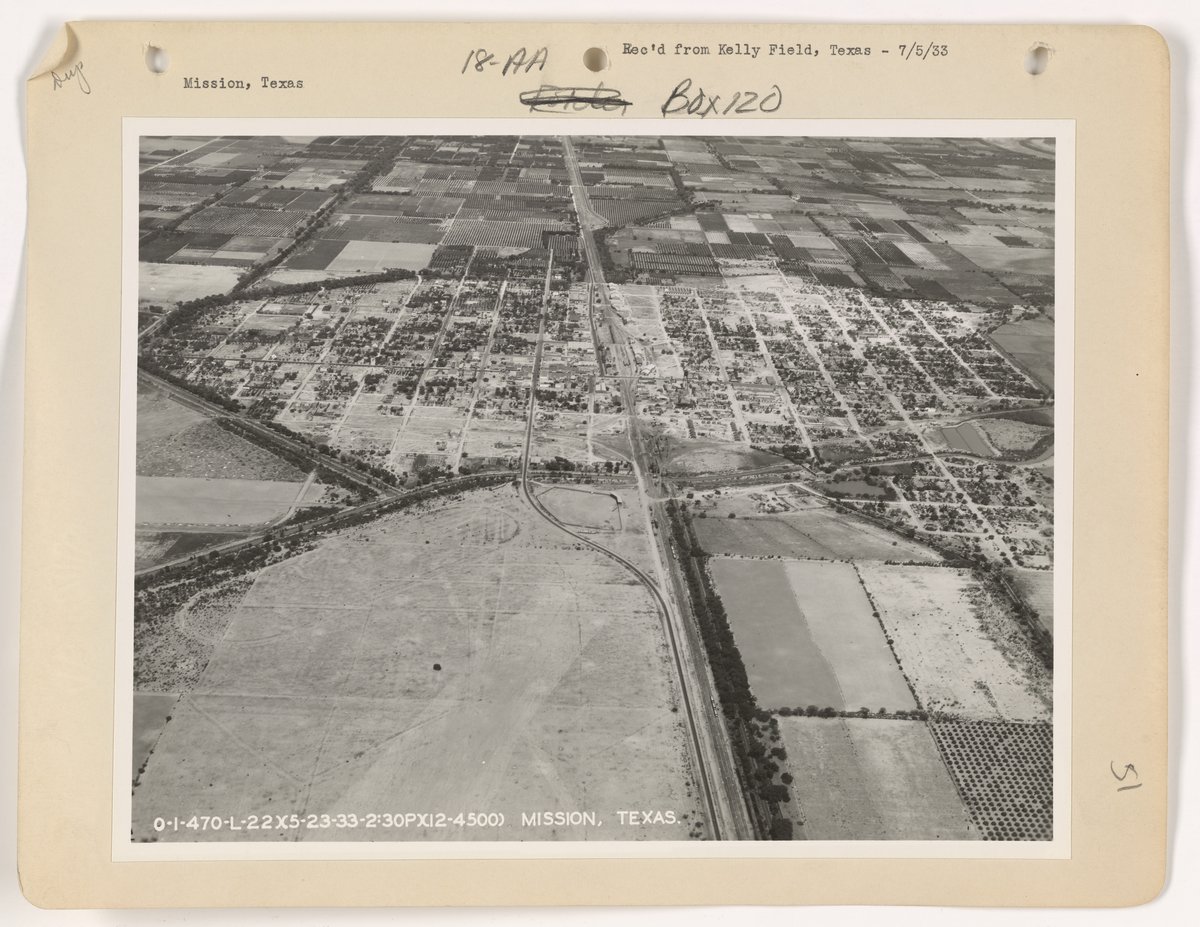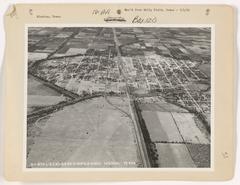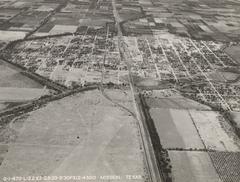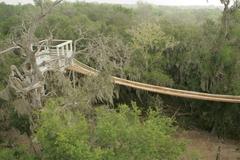Mission and McAllen Visiting Hours, Tickets, and Historical Sites Guide
Date: 17/08/2024
Introduction
Mission and McAllen, Texas, are two vibrant cities located in the Rio Grande Valley, each with a rich tapestry of history, culture, and natural beauty. These cities offer a unique blend of historical landmarks, modern amenities, and cultural events that make them fascinating destinations for travelers. Mission, known as the ‘tourist mecca of South Texas,’ was founded in 1907 and is famous for its citrus industry, particularly grapefruit, which is celebrated annually during the Texas Citrus Fiesta (Texas State Historical Association). McAllen, officially founded in 1905, has evolved from an agricultural hub to a bustling city known for its retail and international trade, driven by its strategic location near the Mexican border (Wikipedia). Whether you are interested in exploring historical sites, enjoying nature, or immersing yourself in local culture, this comprehensive guide will provide you with all the information you need, including visiting hours, ticket prices, and travel tips to make your visit to Mission and McAllen unforgettable.
Table of Contents
- Guide to Visiting Historical Monuments in Mission and McAllen, Texas
Guide to Visiting Historical Monuments in Mission and McAllen, Texas
Introduction
Mission and McAllen, Texas, are two cities rich in history and culture, offering visitors a unique glimpse into their storied pasts. This guide provides comprehensive information on the historical landmarks, visitor tips, and modern developments that make these cities must-visit destinations. Whether you’re interested in Mission, Texas visiting hours or McAllen historical sites, this guide has you covered.
Historical Background
Early Settlement and Founding
Mission, Texas
The city of Mission was founded in 1907 when John J. Conway and J. W. Holt purchased the 17,000-acre La Lomita Ranch from the Oblate fathers, along with 10,000 acres from John Closner and James B. Wells. They began selling tracts to settlers arriving in the area. The Missouri Pacific line was extended from Brownsville in 1904 but initially stopped at Mamie, which lay 5½ miles from La Lomita by way of a terrible mud road. A new station and railroad siding, along with a gift of twenty acres of irrigated land, enticed the railroad to move its agent from the community of Sam Fordyce to a site called Mission, to which the new settlement moved also. On December 8, 1908, the post office was moved to the railroad site, where it was renamed Mission because there was already another post office called Lomita in Texas. A local school was established in 1908, and a pharmacy was built. By 1909, a newspaper and a hotel were in operation, and the city incorporated in 1910 (Texas State Historical Association).
McAllen, Texas
McAllen was officially founded in 1905, named after John McAllen, a Scottish settler whose ranch was the town site. The area around McAllen was largely rural and agricultural in character, but the latter half of the 20th century saw steady growth, which has continued into the 21st century. The introduction of the maquiladora economy and the North American Free Trade Association led to an increase in cross-border trading with Mexico (Wikipedia). The Hidalgo and San Miguel Extension of the St. Louis, Brownsville, and Mexico Railway reached the Santa Anita Ranch in 1904. John McAllen and his son James had donated land to the railroad to guarantee it would cross this area. On December 5, 1904, the McAllen Townsite Company was formed by Uriah Lott, Leonidas C. Hill Sr., John McAllen, James Ballí McAllen, and John J. Young (Texas State Historical Association).
Economic Development
Mission, Texas
Irrigation allowed the fields in Mission to produce three crops a year, drawing farmers to the area. Beginning around 1910, citrus fruit culture was started there, and John H. Shary rebuilt the local irrigation system and sold small irrigated citrus farms. He founded the community of Sharyland and its school, helped develop the Gulf Intracoastal Waterway, and financed the local newspaper. In the 1930s, oil was discovered nearby, contributing to the area’s growth. In 1941, Shary and other businessmen bought land northwest of Mission for an airbase and then sold it at cost to the United States government. From 1941 to 1946, there were always about 3,000 men in training at Moore Air Force Base. Many trainees and their families returned to Mission after World War II, when the base became Tri-Cities Airport and then the Weaver H. Baker Memorial Tuberculosis Center (Texas State Historical Association).
McAllen, Texas
McAllen’s strategic location near the border made it a crucial point during World War II. Military bases were established, bringing a rush of economic activity and making it a key player in the war efforts. Post-war McAllen saw an explosion of growth. The city modernized, schools were built, and businesses boomed. It was during this era that McAllen started transitioning from a small town into the burgeoning city it is today. Once known for its agriculture, particularly citrus fruits, McAllen has evolved into a retail and international trade center, owing largely to its location and the establishment of Foreign Trade Zones (Explore Texas).
Cultural and Social Dynamics
Mission, Texas
Mission is known as the ‘tourist mecca of South Texas,’ situated in southwestern Hidalgo County on U.S. Highway 83, the Missouri Pacific line, and State Highway 107. It is 3½ miles north of the Rio Grande, four miles northeast of Anzalduas County Park, five miles northeast of Bentsen-Rio Grande Valley State Scenic Park, and twenty-three miles northwest of Santa Ana National Wildlife Refuge. It is midway between the beaches of South Padre Island and International Falcon Reservoir. Mission lies between 100 and 143 feet above sea level in the wide agricultural delta of the Rio Grande. It is known as the home of the grapefruit. For nearly 250 years, the descendants of the original Spanish settlers in this area have ranched the huge porciones—oblong blocks of land nine-thirteenths of a mile wide at the Rio Grande and extending up to sixteen miles north (Texas State Historical Association).
McAllen, Texas
McAllen has long had a large population of Mexican descent; segregation and a transformation from a ranching economy (Mexican dominated) to a farming economy (dominated by white settlers) raised tensions in the city. The city’s foreign trade zone flourished in the 1980s. The International Museum of Art and Science and the Hidalgo County Historical Museum are located in McAllen. Popular local events include the Candlelight Posada, held in Archer Park in early December, the Fourth of July Fajita Cookoff, the Texas Citrus Fiesta, Springfest!, Borderfest, and the Annual Texas Square Dance Jamboree (Britannica).
Historical Landmarks and Sites
Mission, Texas
Mission is home to several historical landmarks and sites that reflect its rich history:
-
La Lomita Mission: A small chapel built by the Oblates of Mary Immaculate, one of the oldest structures in the area.
- Visiting hours: 9 AM to 5 PM daily
- Tickets: Free admission
- Insert image of La Lomita Mission here
-
Mission Historical Museum: Offers exhibits on the city’s history, including its agricultural roots and the development of the citrus industry.
- Visiting hours: 10 AM to 4 PM, Tuesday to Saturday
- Tickets: $5 for adults, free for children under 12
- Insert image of Mission Historical Museum here
-
Veterans Memorial of Texas: Honors the military service of local residents and features a variety of monuments and displays.
- Visiting hours: Open 24 hours
- Tickets: Free admission (Wondrous Drifter).
- Insert image of Veterans Memorial of Texas here
McAllen, Texas
McAllen boasts several historical sites and famous landmarks:
-
Quinta Mazatlan: A historical mansion converted into a nature and birding center.
- Visiting hours: 8 AM to 5 PM, Tuesday to Saturday
- Tickets: $3 for adults, $2 for seniors, free for children under 5
- Insert image of Quinta Mazatlan here
-
Apollo Mission Control Center: Located on the campus of the University of Texas Rio Grande Valley, used during the Apollo missions to monitor the spacecraft and communicate with the astronauts.
- Visiting hours: By appointment only
- Tickets: Free admission (Wondrous Drifter).
- Insert image of Apollo Mission Control Center here
Modern Developments and Future Prospects
Mission, Texas
Mission continues to grow and develop, with a focus on maintaining its historical roots while embracing modern advancements. The city has invested in infrastructure improvements, including new roads and public facilities, to support its growing population. Efforts to preserve historical sites and promote tourism have also been a priority, with events like the Texas Citrus Fiesta drawing visitors from across the state and beyond. Recent developments include the expansion of local parks and community centers (Texas State Historical Association).
McAllen, Texas
McAllen today is a city that celebrates its past while looking toward the future. Investments in healthcare, education, and infrastructure signify a city that is always looking forward. The 21st century has brought challenges like border politics and social issues, but McAllen continues to thrive. Recent developments include the expansion of the McAllen Convention Center and new healthcare facilities. Historical sites, museums, and cultural events are testament to a community that values its rich history (Explore Texas).
FAQ
Q: What are the visiting hours for La Lomita Mission in Mission, Texas?
A: The visiting hours are from 9 AM to 5 PM daily.
Q: How much are the tickets for Quinta Mazatlan in McAllen, Texas?
A: Tickets are $3 for adults, $2 for seniors, and free for children under 5.
Q: Are there any special events in McAllen, Texas?
A: Yes, popular events include the Candlelight Posada, Fourth of July Fajita Cookoff, Texas Citrus Fiesta, Springfest!, Borderfest, and the Annual Texas Square Dance Jamboree.
Q: What is the best time of year to visit Mission and McAllen?
A: The best time to visit is during the cooler months from November to March when the weather is mild.
Q: Are there any guided tours available?
A: Yes, guided tours are available at several historical sites, including the Mission Historical Museum and Quinta Mazatlan. Check their websites for more details.
Conclusion
By understanding the historical background and visiting the landmarks of Mission and McAllen, visitors can gain a deeper appreciation for the rich cultural tapestry that defines these vibrant Texan cities. Whether you’re interested in history, culture, or nature, these cities offer something for everyone. Make sure to check out the local events and plan your visit to experience all that Mission and McAllen have to offer. Don’t forget to check the Mission, Texas visiting hours and McAllen historical sites for a well-planned trip.
Call to Action
For more in-depth guides and updates, follow us on social media and check out our other articles. Download our mobile app for the latest information on historical sites and events in Texas. Explore more about visiting hours, guided tours, and the best times to visit Mission and McAllen.
References
- Texas State Historical Association. Mission, TX. Retrieved from https://www.tshaonline.org/handbook/entries/mission-tx
- Wikipedia. McAllen, Texas. Retrieved from https://en.wikipedia.org/wiki/McAllen,_Texas
- Explore Texas. McAllen, Texas History. Retrieved from https://exploretexas.com/blog/mcallen-texas-history/
- Wondrous Drifter. Historical Sites and Famous Landmarks in McAllen, Texas. Retrieved from https://wondrousdrifter.com/north-america/usa/texas/mcallen/historical-sites-and-famous-landmarks-in-mcallen-texas/
- Rio Grande Guardian. Centro Cultural Mexicano has a new home in Mission. Retrieved from https://riograndeguardian.com/centro-cultural-mexicano-has-a-new-home-in-mission/
- Enchanting Texas. Things to do in McAllen. Retrieved from https://enchantingtexas.com/things-to-do-mcallen/



